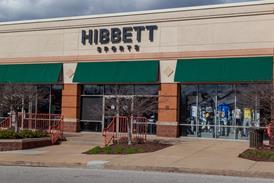The number of empty shops in Britain has continued to rise in 2010, also highlighting a marked north-south divide.
Town-centre vacancy rates rose from 12% at the end of 2009 to 14.5% at the end of 2010, according to the Local Data Company.
The statistics reveal a north-south divide, with “black spots” in the north of the country and the Midlands, with vacancies above the average 14.5% rise.
Vacancy rates in the south of England were 12.3%.
Large towns had a higher vacancy rate, at 16.5%, than smaller centres where the rate was 12%.
Vacancy rates were about 19% in large town and city centres in the north of England with Yorkshire and the Humber even higher at nearly 21%.
Rates for large centres in London, the south-east, the east and the south-west were all about 14%, while Scotland had the lowest regional vacancy rate at 12.6%.
Smaller centres in the north-west had the highest rate, at more than 17%.
JJB is trying to offload stores via a CVA while HMV Group said at the start of the year it wanted to shut 60 shops.
The British Retail Consortium said the number of empty shops means the Government needs to deliver a retail-friendly Budget in March.
British Retail Consortium Director of Business and Regulation, Tom Ironside, said: “High street retailing will continue to be at the heart of communities and a vital part of our overall retailing mix.
“The fragile state of the economy is compounding difficulties many of our town centres have been facing for some time. Economic recovery alone will not be enough to ensure they bounce back.
“Town centres need to be actively planned, managed and invested in. Key issues, including the costs of doing business, parking and access and crime, need to be addressed. They must be actively planned, managed and invested in.
“The soaring number of empty shops shows how important a retail-friendly budget is. Next month, the Chancellor has a crucial opportunity to help high streets by easing existing cost pressures and resisting the temptation to impose new ones.
“And, as they set their own budget priorities, local authorities must consider the impact of their actions on ailing streets. For example, pushing up parking charges may be an attractive fund raiser but will turn customers away.”
























1 Reader's comment